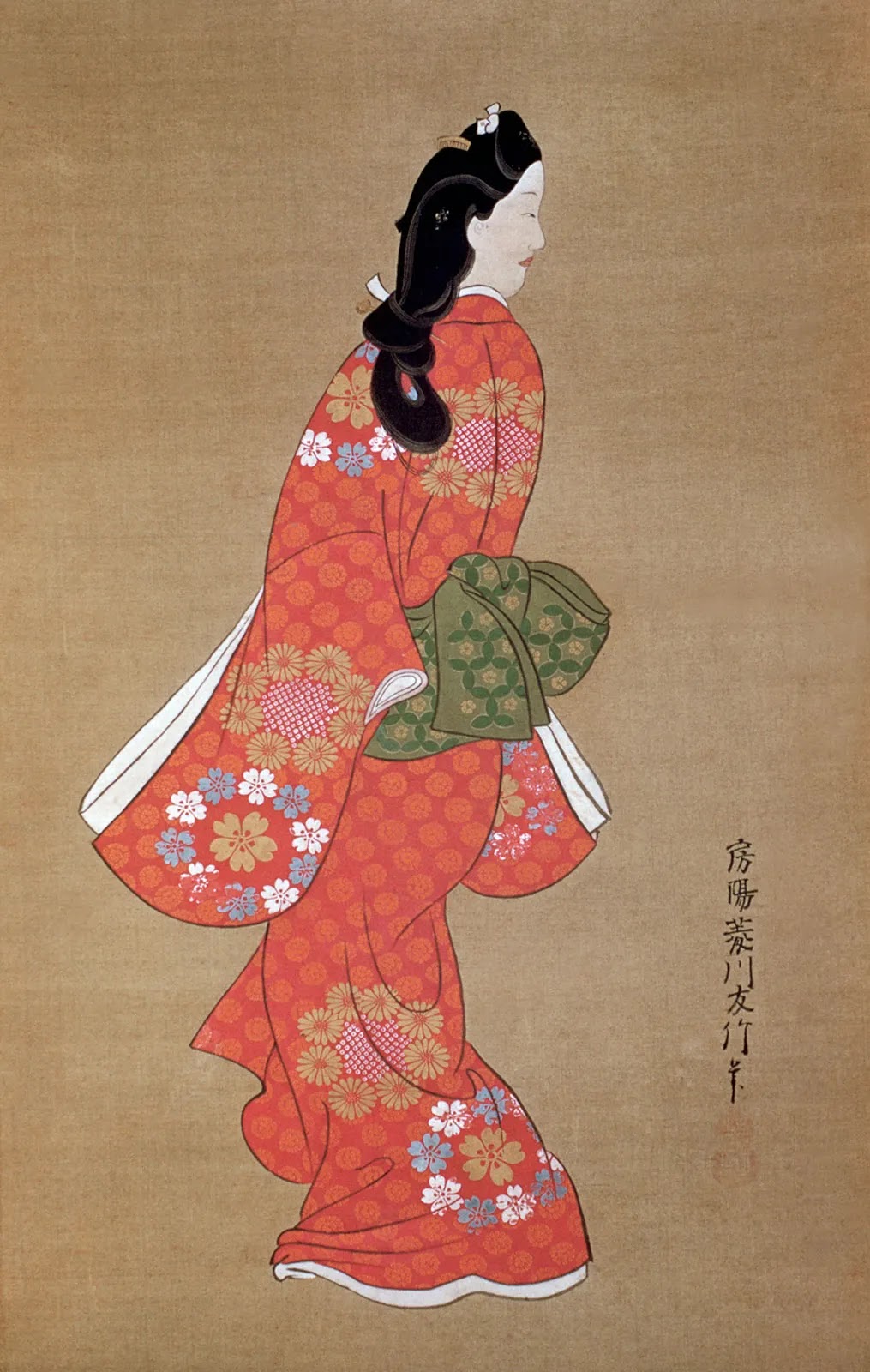Echoes of Edo: Japan’s Artistic Legacy in Three Masterworks
Japan's Edo period (1603–1868) was an era of political stability, cultural flowering, and creative innovation. Tokugawa Japan had over two centuries of relative peace and isolation from the outside world. It thus had space for local art to develop with practically no influence of Western styles. During this period, the ukiyo-e woodblock print art, textile arts, and decorative arts developed in balance with daily life, nature, and religious ideals. The art became less confined to the aristocracy, and there was a new merchant class that developed, which produced cultural trends. Despite the isolation of Japan, artists remained influenced by sporadic contact with the outside world and produced works that were quintessentially Japanese but more subtle and innovative. Edo-era art is a rich tapestry of beauty, craftsmanship, and deep cultural heritage, a rich window into a world governed by tradition, ritual, and the nascent feeling of simplicity and elegance.
Possibly the most recognized non-Western image in the world, The Great Wave off Kanagawa by Katsushika Hokusai (c. 1831) reveals both nature's awesome potential and the understated resilience of humanity. Rendered in Edo (today Tokyo), the woodblock print relies on black-lined boldness, kinetic action, and strong size contrast between miniature boats dwarfed by an overbearing wave to generate on-page cinematic suspense and feeling. The sweeping curves of the wave and subtle blue gradients are mesmerizing, while the calm presence of Mount Fuji in the background offers a moment of stillness amid the chaos. Hokusai’s print is a perfect example of ukiyo-e, a genre that flourished during Japan’s peaceful and isolated Edo period, catering to a growing middle class. Even during this isolation, his use of imported Prussian blue reveals a subtle global influence. To me, this print is both technical excellence and deep cultural meaning, a combination of beauty, danger, and survival in the power of one great image.
--------------------------------------------------------------------------------------------------------------------------------
Hishikawa Moronobu's Beauty Looking Back, made around 1680 in Edo, Japan, is an exquisite woodblock print that captured a moment of impermanent beauty. The work shows a young woman who is slowly turning her head over her shoulder, a movement simple yet elegant and intimate. The loose outline, blank background, and elaborate textile pattern of Moronobu draw the eye to the figure's face and stance, and silence and blank space make her presence all the more compelling. I am most struck by how so few weak lines can convey so much feeling and sensitivity. This book represents the humility, beauty, and style of Edo, and is also a significant juncture in the history of art, when art became publicly accessible to all through prints. Moronobu was a key player in ukiyo-e, which drew art out of the aristocrats' hands into those of the populace, yet never lost the elegance and tradition of the Japanese.
--------------------------------------------------------------------------------------------------------------------------------
Kogin-zashi, the old embroidery from the 18th century of Japan's northern province of Tsugaru, is testament to the mutualism of survival and art. It was created by rural community women using white yarn and indigo-dyed cotton. The people's clothes initially formed a practical exercise in the reuse and refurbishment of clothes for defense against the northernly harsh winters. What draws me to this task is its unassuming power—every geometric stitch, aside from being beautiful, has a purpose. The embroidery itself is comprised of repetitive, symmetrical patterns that speak of mathematical accuracy and artistic skill, each individually imbued by the hand of its maker yet firmly based within communal tradition. Although the artists themselves remain nameless, their work endures with every strand. Aside from being a form of art, Kogin-zashi is also a symbol of the resourcefulness and strength of Edo-era working-class women, and its modern revival in today's slow fashion and handmade movements in contemporary Japan is such that it carries on into the future.
--------------------------------------------------------------------------------------------------------------------------------
Hokusai, Katsushika. The Great Wave off Kanagawa. c.1831, The Metropolitan Museum of Art. https://www.metmuseum.org/art/collection/search/45434
"Beauty Looking Back." Encyclopædia Britannica, Encyclopædia Britannica, Inc., https://www.britannica.com/art/Beauty-Looking-Back
“‘Kogin’ Embroidery.” Google Arts & Culture, Aomori Prefecture Government, https://artsandculture.google.com/story/%E2%80%9Ckogin%E2%80%9D-embroidery-aomori-prefecture-government/PgXR55VaVTzcJA?hl=en





Hello Reagan,
ReplyDeleteI love the detail you put into this assignment. Funny enough, I also chose the edo-period for my mid or post modern blog so it's great to see a different perspective. I chose the Great Wave of Kanagawa as one of my artworks as well, I mean like with what you first said about it being iconic, how could I not have! What appealed to me most in this painting was the massive wave itself, looking huge in comparison with the boats and Mt. Fuji in the background. It really hammers home the themes of movement, human struggle/resilience, and the power of nature.
I love your blog! I did mine on the Edo period as well, particularly on Kabuki performance arts, and I think it's cool to see what you focused on. There are so many expensive arts from Japan and its Edo period, and I love seeing the different sides of it. I'm especially interested in the textiles you included. In my research, I hadn't come across embroidery or any particular sewing work, so it's awesome to see what that looked like during the period and what the techniques were like. I love the use of small, repeating symbols within the embroidery, and the technical skill required is astounding. You did a great job on your blog! Everything is well organized and provides a diverse look at the art, culture, and creativity of Japan's Edo period. Awesome job!
ReplyDelete